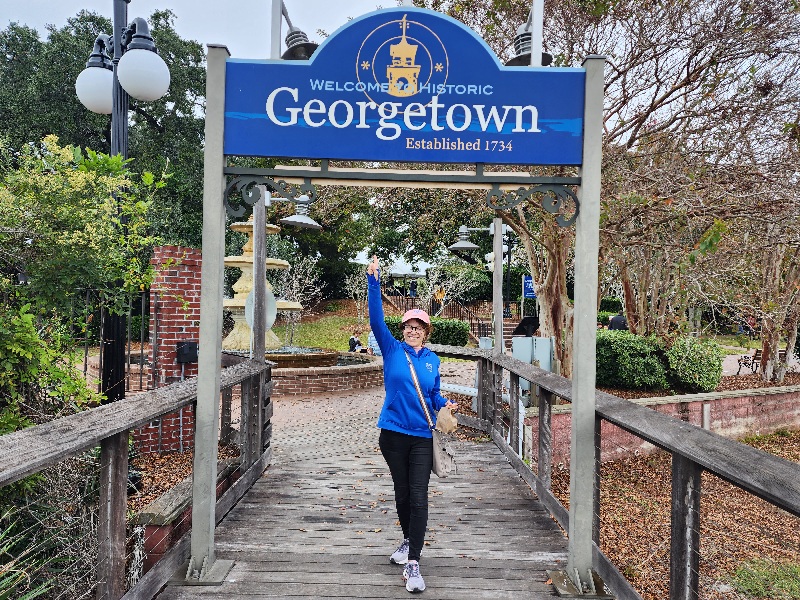South Carolina’s third-oldest city, following Charleston and Beaufort, Georgetown drips history like moss on a live oak. The area’s first residents were native tribes, their names echoed in the surrounding bodies of water, like Winyah Bay. Europeans settled here in 1526, but Georgetown wasn’t established as a city until 1729. Three years later, it became an official port of entry. Before the Revolutionary War, indigo was the moneymaker; then after that it was Carolina Gold rice. There’s even a Rice museums located downtown.
With the help of the tide, we arrived in Georgetown early around 1:30PM eager to explore the city. The historic district falls within the original city grid, occupying about 37 blocks running along the waterfront. Anchoring downtown is Front Street, with its colorful shops and aged brick facades overlooking the harbor. Unfortunately most of the shops were closed during off season on a Sunday afternoon except for some restaurants and few shops. Nevertheless, we continued our walk passing by streets lined with neoclassical architecture, everything from 18th century plantations to Victorian estates turned into museums and landscaped gardens left by rice and indigo farmers.
Unfortunately, rain started to pour, we couldn’t visit the nearby Yawkey Wildlife Center. Yawkey, who was once an owner of the Boston Red Sox, grew up coming to this part of the world, eventually amassing a property that spanned 24,000 acres—all of which was donated to the State of South Carolina in 1977 after he died.
We ended our day taking an Uber to CVS for our annual flushots and stocked up on groceries at Piggly Wiggly since we’ll be anchoring and staying on moorings for the next 6 days as we move our way south towards Beaufort. We decided not to stop in Charleston since we’ve been there before and most of the marinas are fully booked. This will allow us more time to explore our next two destinations, Beaufort and Savannah.

